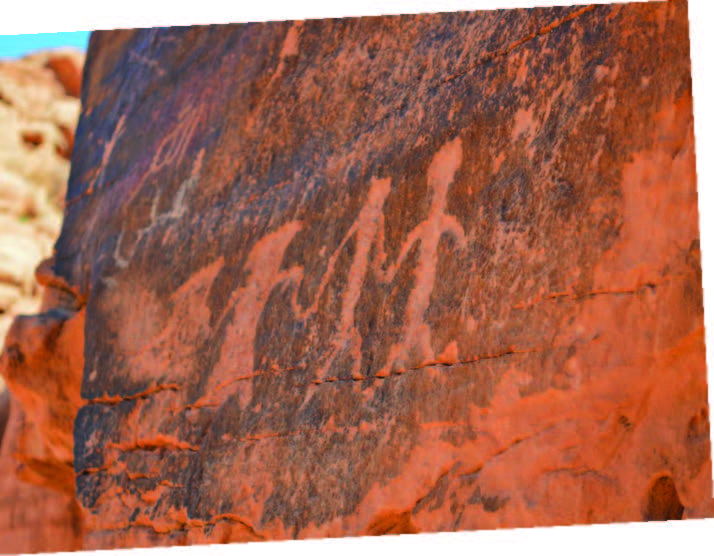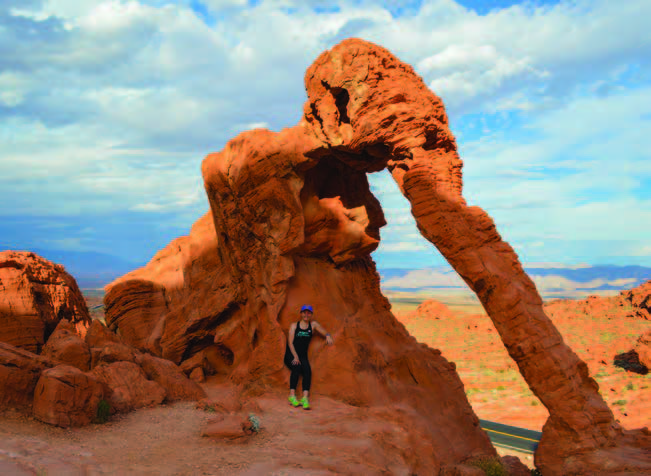The Spark that Ignited a Valley of Fire
July – August 2015
The Beauty of this Nevada State Park Burns Bright.
BY ERIC CACHINERO
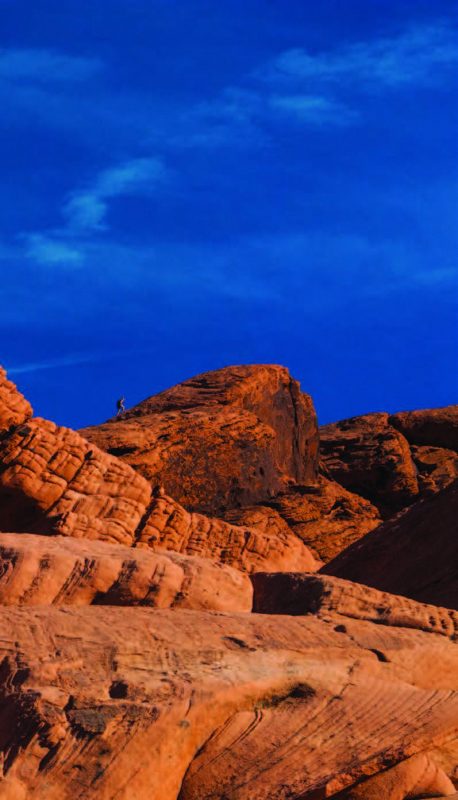
Fire is a truly wondrous element. It can be used to heat, cook, forge, ignite, power, illuminate, and even sustain life. But it’s not flames that light up Nevada’s first state park, rather millions of years of geologic activity that gives the landscape its rusty glow.
Valley of Fire State Park—located some 50 miles northeast of Las Vegas—stands out as some of the most remarkable geological features in the state. The park’s beauty is undisputed by those who’ve had the pleasure of setting foot upon the magnificent, yet unforgiving country. The area is little changed from the times when ancient Nevadans and travelers documented their experiences via petroglyphs on the canyon walls.
SAND TO SPARK
When dinosaurs roamed the lands that would eventually become Nevada 150 million years ago, Valley of Fire began to form. Great shifting sand dunes swirled and collected in the area, before other minerals and pressure combined to create the red, pink, orange, tan, and white sandstone that the park has become known for. After millions of years, complex uplifting, faulting, and erosion carved crevices, arches, and myriad other distinct formations, giving Valley of Fire its famous features. In fact, quite ironically, it’s this erosion caused by water that had more to do with giving the appearance of fire than did flames.
According to Nevada State Parks, the region was visited by Basket Maker people and later the Anasazi Pueblo—and the evidence lingers. Ambiguous artistic etchings line many of the park’s sandstone walls, showing ancient evidence of hunting that occurred in the area. Because of the lack of water in the region, prolonged habitation is doubtful, although hunting, food gathering, and religious ceremonies are believed to have taken place in Valley of Fire from 300 B.C. to 1150 A.D.
STOKING THE FLAMES
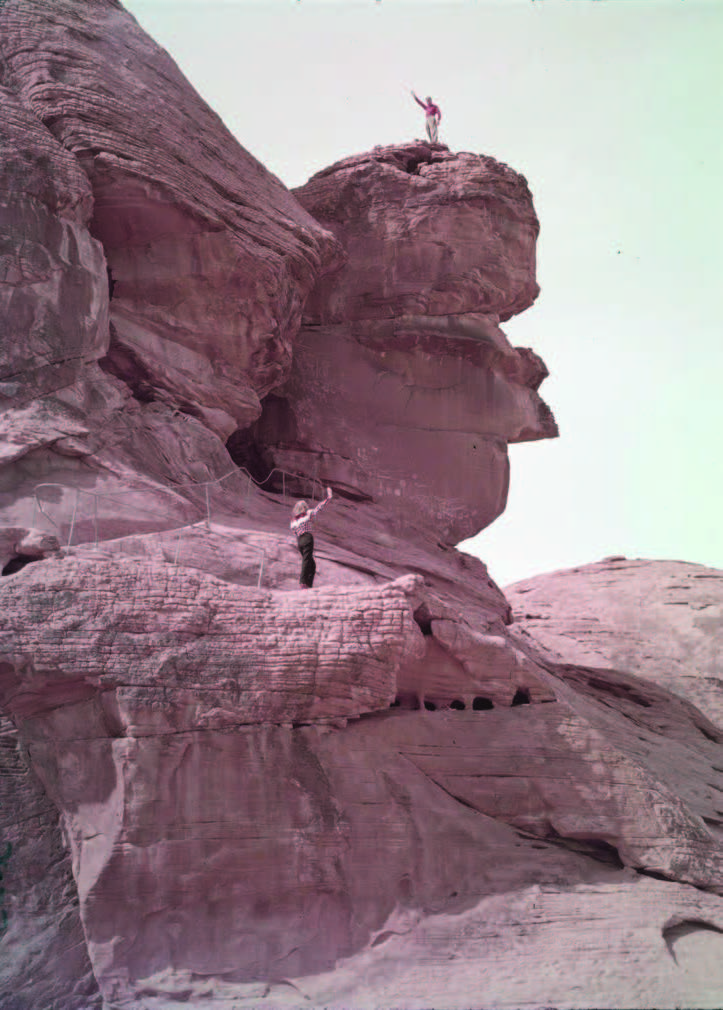 It wasn’t until the mid-1930s, however, that Valley of Fire gained its official designation. In conjunction with the National Park Service, the Civilian Conservation Corps built the park’s first roads and campground facilities (cabins still remain in the park today). According to Valley of Fire Park Ranger Chris Johnson, this was followed by an early dedication of Boulder Dam-Valley of Fire State.
It wasn’t until the mid-1930s, however, that Valley of Fire gained its official designation. In conjunction with the National Park Service, the Civilian Conservation Corps built the park’s first roads and campground facilities (cabins still remain in the park today). According to Valley of Fire Park Ranger Chris Johnson, this was followed by an early dedication of Boulder Dam-Valley of Fire State.
“It was prematurely dedicated on Easter Sunday 1934 by local citizens,” Chris says.
What resulted was the official creation of Boulder Dam-Valley of Fire State Park on March 26, 1935. Though Nevada’s first four state parks (Beaver Dam State Park, Cathedral Gorge State Park, Kershaw-Ryan State Park, and Valley of Fire State Park) were established by concurrent legislation, Valley of Fire has long been recognized as the first because of its premature designation.
BURNING THROUGH THE DECADES
In the decades since its inception, Valley of Fire has ignited its way to national attention. The park has become a popu- lar destination for shooting music videos and films, including “Transformers,” “Total Recall,” and “Star Trek Generations,” where Captain Kirk fell to his death inside the park.
The 1966 Burt Lancaster Western “The Professionals” was also filmed in the park, and a wooden shack frame—pieces of the original movie set—remains for visitors to see. The scene took place in an area now referred to as White Domes—a remarkable display of vibrant sandstone, slot canyons, and caves. Chris explains that, in some instances, film production in the park has lent itself to the overall design of the park.
“The film was actually responsible for much of the initial creation of the road,” he says.
CONTEMPORARY COMBUSTION
The park has many features that set it apart from the miles of surrounding desert. Atlatl Rock shows an outstanding example of well-preserved petroglyphs, featuring an early depiction of an atlatl—a notched stick used to throw primitive spears. Elephant Rock is pretty much exactly what it sounds like—a rock that looks like an elephant. From the correct angle, the arch looks like an elephant’s head, trunk, and body were turned to stone by Medusa herself. Fire Canyon is a must see while visiting Valley of Fire. The deep-red sandstone is con- trasted by the off-white colors of the adjacent Silica Dome.
In addition to the geological features, Valley of Fire offers group-use areas, picnic areas, and a visitor’s center complete with gift shop and museum. The park has two campgrounds, which hold a combination of primitive sites and RV sites and are available seasonally on a first- come, first-served basis. Several hiking trails are also available, but be sure to check with the visitor’s center before embarking. True to its name, Valley of Fire summer temperatures can exceed 120 degrees. Come prepared if hiking or camping.
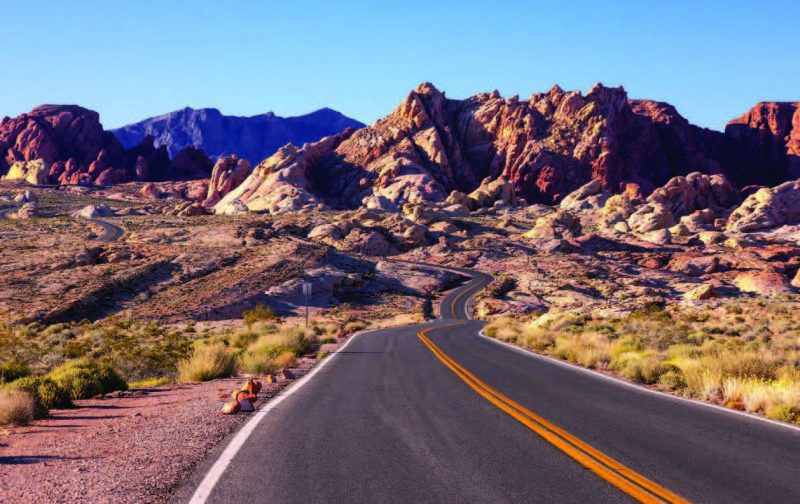
“Roadrunners, coyotes, and lizards are pretty common,” Chris says. “It’s also not uncommon to see a desert kit fox rummaging in the campgrounds at night.”
Nevada’s state animal and reptile—desert bighorn sheep and desert tortoise, respectively—also call Valley of Fire home. Beyond even-tempered foxes and sheep, the park is home to several different types of rattlesnakes. Though generally rare, keep an eye out for these venomous snakes.
COME ON BABY, LIGHT MY FIRE
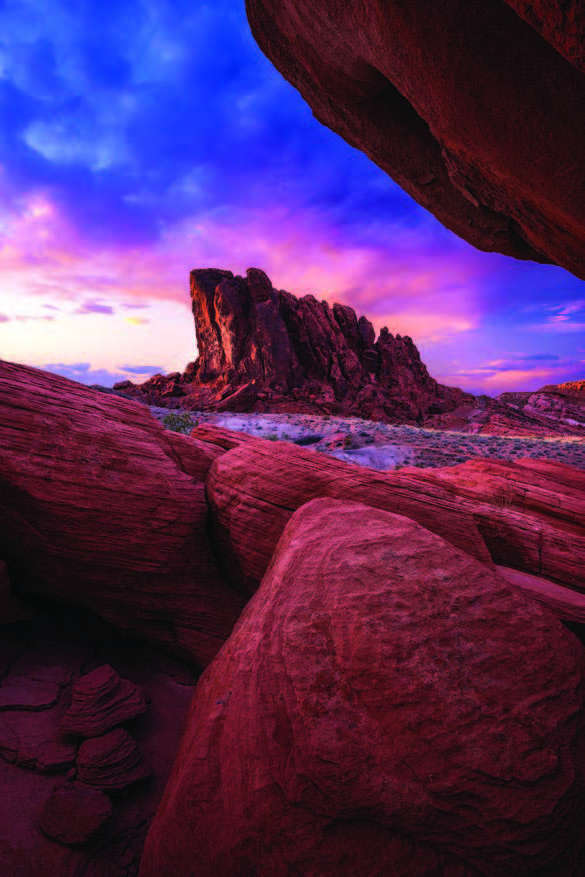 One of the beautiful things about Valley of Fire State Park is the absolute scope and size of the explorable areas. You could spend a lifetime climbing rocks and traversing canyons, and still not see them all. If visitors maintain a respect for the natural balance of this gem, it will continue to fuel the flames of adventurers for years to come.
One of the beautiful things about Valley of Fire State Park is the absolute scope and size of the explorable areas. You could spend a lifetime climbing rocks and traversing canyons, and still not see them all. If visitors maintain a respect for the natural balance of this gem, it will continue to fuel the flames of adventurers for years to come.
SPARK ADVENTURE
Valley of Fire State Park 29450 Valley of Fire Rd.
Overton, NV 89040
parks.nv.gov, 702-397-2088

